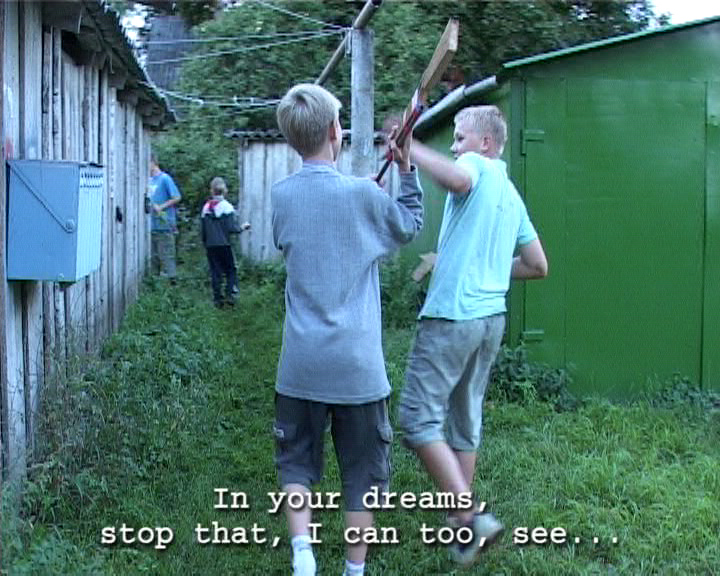At the juncture of the 20th and 21st centuries, many of the first generation of New Art creators turned to film and video cameras, and the moving image, very often with sound, became an indispensable medium of expression.
Henrikas Gulbinas, of Kaunas, is considered the pioneer of video art in Lithuania. Before emigrating in 1988, he exhibited some of this video works in Klaipėda in 1987. Gintaras Šeputis, although a student of textiles at the Academy of Art, contributed to the development of this artistic form, building on his early experimentation with an 8 mm film camera in his teenage years in Šiauliai. Following a visit to the Düsseldorf Art Academy and its Photography and Video Arts Department in 1991, Šeputis sought to establish a similar department at the Vilnius Academy of Arts (VAA). The photographer Alvydas Lukys had already established a photo studio within the VAA Graphic Arts Department in 1990. In 1994, this was replaced by the Image Studio, where Šeputis organized video arts courses for students of various concentrations. In 1997, the studio was reorganized into the Department of Photography and Media.
Around 1990, Šeputis created introspective imagery art, a kindred of photography, of slideshows, such as Ritmas (Rhythm) in 1989, Didžiosios maudynės (The Great Swim) in 1991, Minties forma (Form of Thought) in 1992, and Miręs laikas (Dead Time) in 1994; and also art involving spectators or participation in a live event: Diskomforto studijos skambant meditacinei muzikai (Studies in Discomfort Accompanied by Meditative Music) in 1990, Parafonija trims televizoriams ir violončelei (Paraphonia for Three Televisions and a Cello) based on music by Snieguolė Dikčiūtė, in 1992.
A video tape entitled Geriausi Liletuvos videomeno darbai (The Best Lithuanian Video Art Works), published by the SCCA in 1996, featured, alongside the works of Gulbinas and Šeputis, creations by the group "Akademinio pasiruošimo grupė", Karla Gruodis, Aleksas Andriuškevičius and Audrius Mickevičius.
Artists of the LIAA given greater popularity by the CAC and the SCCA (Deimantas Narkevičius, Evaldas Jansas, Gintaras Makarevičius, Eglė Rakauskaitė and Dainius Liškevičius) did not consider that what they were creating was video art. The filmed images in their works were just a part of the activity, process, research or installation. For them, filming (using cameras on loan from the CAC) or editing (in the CAC editing room) was merely one of several "disciplines" (the others being performance and body art, history and cultural anthropology). After 2000, some of them realized that works created with a video camera could not be divorced from documentary filmmaking and began producing full-length films and participating in international documentary film festivals.
The turn toward camera imagery in the creative work of contemporary artists was a rather sudden but logical progression, since their means of expression and their symbolic material had, until then, centered on realism and various elements and fragments of the physical world.
Deimantas Narkevičius had consistently been developing the theme of memory in his work, and began with an examination of the relics of everyday Soviet life that had been transformed into symbols of an era: a jammed table, chopped up chairs covered in plaster, crooked children's beds smothered in paraffin wax, closets with carved out but closed doors, or shoes filled with salt (although it is very unlikely the shoes were Soviet-made). In 1996, he displayed a living Pilies Street artist at the CAC, complete with all of his works for sale. One of Narkevičius' first films, Europa 54 54’ – 25 19’ (1997), documented a trip to the geographical center of Europe outside of Vilnius, a locale that clearly did not correspond to other cultural or political centers of the continent. Other films by this artist from the end of the 20th century combine visual aesthetics with the recording of history.




Comments
Write a comment